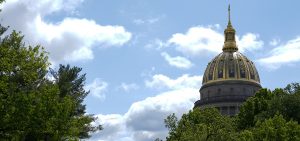News
West Virginia expands its education savings account program for military families
By: Leah Willingham | AP
Posted on:
CHARLESTON, W.Va. (AP) — A program that incentivizes West Virginia families to pull their children out of K-12 public schools by offering them government-funded scholarships to pay for private school or homeschooling is expanding to cover military families that temporarily relocate out of state.

“A temporary relocation pursuant to military orders should not jeopardize a child’s ability to participate in the Hope Scholarship Program,” Moore said in a statement.
Moore, a Republican who was elected to the U.S. House representing West Virginia’s 2nd Congressional District this month, said he is “thrilled” to offer greater “access and flexibility” for military families. The change takes effect immediately, he said.
Passed by the Republican-controlled Legislature in 2021, the law that created the Hope Scholarship Program allows families to apply for state funding to support private school tuition, homeschooling fees and a wide range of other expenses.
As of now, families can’t receive the money if their children were already homeschooled or attending private school. To qualify, students must be slated to begin kindergarten in the current school year or have been enrolled in a West Virginia public school during the previous school year.
However, the law expands eligibility in 2026 to all school-age children in West Virginia, regardless of where they attend school.
Going into the 2023-2024 school year, the Hope board received almost 7,000 applications and awarded the scholarship to more than 6,000 students. The award for this school year was just under $5,000 per student, meaning more than $30 million in public funds went toward the non-public schooling.

